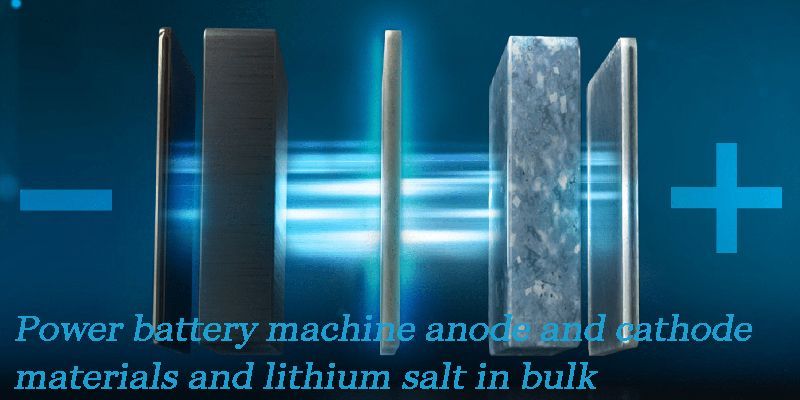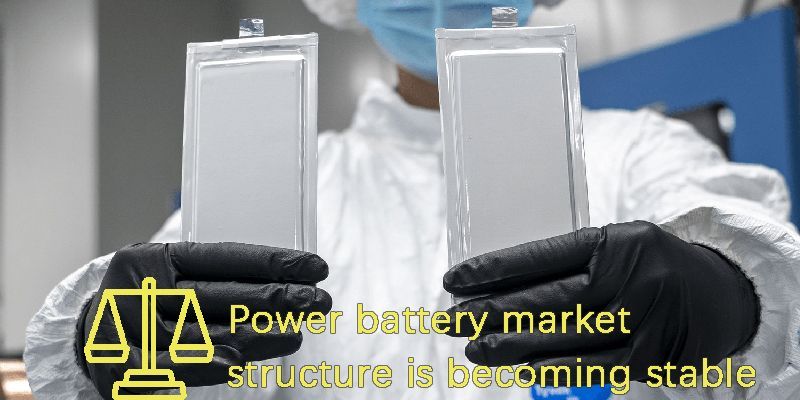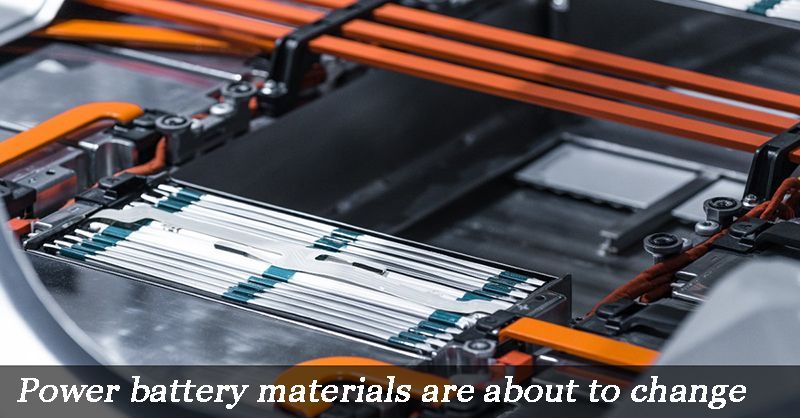
Main content:
In recent years, the global new energy vehicle market is booming, and the installed demand for power batteries is accelerating. Statistics show that about 6.37 million new energy vehicles will be sold globally in 2021, up 100 percent year-on-year. The installed power battery capacity was about 292.13GWh, up 114% year-on-year, and China's power battery output totaled 219.7GWh. Among them, the total installed capacity of the top 15 power battery enterprises is 281.58GWh, accounting for 96% of the total installed capacity. Market research institutes predict that global sales of new energy vehicles will reach 16.4 million units by 2025. By then, the global demand for power lithium ion batteries will reach 1160GWh (19Wh), officially entering the TWh (1012Wh) era, which means that the next few years will still be a period of rapid growth for power batteries. How will the market structure change in the TWh era? What are the opportunities for industrial chain enterprises? How do power batteries meet the TWh era? This article will provide you with more detailed information.
1.The market structure is becoming more stable
Over the years, there has been a boom in new energy vehicles. Sales of new energy vehicles in China reached 3.029 million units in 2021, up 143 percent year-on-year. Driven by the heat of the industrial chain, China's power battery enterprises are also developing rapidly to seize the booming new energy vehicle market. In recent years, the list and ranking of the top ten enterprises in China's new energy vehicle battery by volume have been changing, and the pattern of Chinese new energy vehicle battery enterprises has not yet been formed.
For the past few years, the list and ranking of the top ten enterprises in China's new energy vehicle battery by volume have been changing, and the pattern of Chinese new energy vehicle battery enterprises has not yet been formed. An industry insider said that the reason why Chinese power battery market rankings continue to change is that the market is growing rapidly and the technology is constantly innovating. In this process, who can grasp the market demand and obtain the trust of downstream manufacturers, it can obtain a higher market share.

At present, there are still opportunities for power battery companies to achieve greater market share through technological innovation and cost reduction. When the new energy power battery enters the TWh era, the competition pattern of enterprises will become stable. In 2021, China's new energy vehicle sales increase by 143% year on year, when the new energy vehicle installation into the TWh era, the market growth will slow down, by then, the annual growth rate of new energy vehicles will remain at about 10%~20%, the new energy power battery market will also appear more fixed head enterprises.
At this stage, it is not clear who will become the leading company of TWh era. However, in the view of the industry insider, the battery manufacturers will have more opportunities to cooperate with the manufacturers, the layout of the motor circuit will also have a strong industry initiative.
2.The bulk of the battery
In the era of TWh, the consumption of power battery increases, the technical route is becoming fixed, and the materials in each link will be more standardized. The cathode and anode materials and lithium salts of power battery machine will have more characteristics of bulk commodities -- homogenization, mass trading and wide use.

The bulk of the battery and its materials, for the head of the field enterprises, will be good news. In the case of commodity commoditization, corporate discourse power is closely related to its market share. The leading enterprises have the capacity to supply large volume products, and the large-scale development of batteries and materials will provide greater profit space for such enterprises.
Being bulk brings not only the standardization of products, but also the refinement of the division of supply. Each supplier will supply more segmented products. Therefore, Xiao Taiming believes that for those suppliers with low market share, they need to look for differentiated competition strategy, look for more segmentation of the market, develop towards personalized and professional direction, and look for market opportunities in relatively marginal areas.
3.Cobalt less, cobalt free, new materials
Material determines battery performance. Power battery materials are bound to change, experts say. As for possible technological changes in the power battery field, Huang proposed several directions. First, use less cobalt or even no cobalt. Second, use less lithium to deliver more power. Third, the search for lower energy consumption of anode materials. Fourth, all solid state.
Ternary lithium battery is the battery type with the largest energy density and the strongest endurance on the market at present, and cobalt is an important raw material of ternary lithium battery. In recent years, the cobalt content in ternary lithium batteries has gradually decreased. From NCM333 (the ratio of nickel, cobalt and manganese is 3:3:3) to NCM523, NCM622 and then to NCM811, the cobalt content required in ternary lithium batteries gradually decreases. Cobalt is the most expensive metal among the cathode materials for ternary lithium batteries. Cobalt prices have risen from less than 500,000 yuan per ton to around 550,000 yuan per ton so far this year.

According to the professional, there are two routes for current technological development: one is to reduce cobalt content from 10% to 5%, and possibly to 2% to 3% in the future; The other route is completely cobalt free. Regarding the next generation of battery materials, the professional said that many schools and research institutions are studying new material systems, including solid state batteries, new lithium salts, silicon carbon anode materials, etc. Such materials have many opportunities and are also the focus of the research institute.
Solid state battery is the development direction of power battery. At present, the industrialization of solid state battery has just begun. At present, the so-called "solid state battery" on the market can only be called "semi-solid state battery", but in the existing lithium ion battery, more or less add part of solid electrolyte, and then improve the safety of the battery to a certain extent. This professional said, the current market so-called "solid state battery" "semi-solid state battery", the use is still common power battery materials, its essence has not changed.
After 2030, when TWh comes along, all-solid-state batteries could go mainstream. In an all-solid-state battery, lithium hexafluorophosphate, currently the main material for the battery's electrolyte, will be replaced, the membrane will take the form of a new solid electrolyte membrane, and the cathode material will be changed, but the positive material will most likely still be the oxide material commonly available on the market, the expert said. However, solid-state batteries are unlikely to achieve a technological breakthrough or even mass production within the next three years, and the expert said the changes could be ignored for now.
4.Will hydrogen fuel cells replace lithium-ion batteries?
The driving range and charging and discharging speed of electric vehicles are the most concerned indicators for consumers. And these two indexes are determined by the anode and cathode materials and electrolyte materials that constitute the cell. Due to the battery high energy density of lithium-ion batteries with lithium cobalt acid and lithium iron phosphate as cathode materials, lithium-containing materials have become the most common choice of cathode materials for new energy vehicle power batteries. Byd's blade battery, for example, uses lithium iron phosphate as its cathode material, while Tesla's car battery uses ternary lithium.
According to estimates, each GWh lithium iron phosphate battery needs about 520 tons of lithium carbonate. The current mainstream ternary lithium battery NCM811 requires 620 tons of lithium carbonate, 750 tons of nickel and 100 tons of cobalt per GWh battery. The price rise of these three categories of metals will greatly bring about the fluctuation of power battery industry chain. In this case, will hydrogen fuel cells, which require less metal, become an alternative to new energy batteries? Unlike the dry battery, which is used as an energy storage device, hydrogen fuel cells are more like power-generating devices that convert chemical energy directly into electricity.

At present, the energy supply of urban ground transportation is mainly battery, while hydrogen fuel cell mainly solves the energy supply problem of long-distance transportation. Hydrogen fuel cells have been widely used in aircraft, ocean-going ships, long-distance trucks and other vehicles. "The development of hydrogen fuel cells and the development of lithium are not substitutes, they are mutually reinforcing." said an industry insider. "Hydrogen fuel cells are power generation devices and lithium batteries are energy storage devices. Energy storage is also needed for many vehicles powered by hydrogen fuel cells." Another expert agrees that If the market demand for hydrogen fuel cells increases, It will not replace lithium batteries, but also promote the expansion of the lithium battery market.